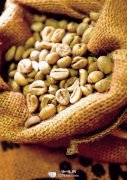Why is coffee not popular in China?

One: it is impossible to quantify:
The question of what flavor is good coffee is too subjective and difficult to explain. Varieties, baking, taste sensitivity, cooking methods, etc., make too big a difference, and there are no quantifiable criteria. Is it possible to explain to non-coffee drinkers that the taste of siphon pots will be very different when cooking for 10 seconds more? can you say because "acidity has decreased by 15% and bitterness has increased by 10%"? It's not easy to use it without an old hand with a kind of product. For those who are used to drinking instant, the flavor of milk is rich, and the next pile of greasy plant fat will taste good. Although tea is also similar, but at least China has played tea for so many years, has formed a set of very mature evaluation system, and coffee is still in the process of exploration.
Second, the stereotype caused by the misleading of young and old people in literature:
Most of the coffee described in various literary films and television works is "instant fragrant slippery", or "bitter black coffee such as tasting life" and so on! After all, not many writers play coffee, which is understandable. But in the eyes of people who are not familiar with it, it creates the impression that either "Didi fragrance is strong, but the meaning is not enough" one yuan is good, or if it is not bitter to astringent, it is not good coffee! By the same token, smoking cigars and smoking are poisoned by all kinds of works, such as smoking a room full of cigarettes, smoking sparks and dry tobacco packs.
Three: typical Bad money drives out good:
When it comes to coffee, it is estimated that the first thing that comes to mind is Nestle, the second is Starbucks, and the third is McDonald's unlimited refills. Some of them are successful in commercial promotion, some are convenient and fast, and some are misled as high-end success, but there is no really good coffee. Even in a coffee shop, is 30% of the really good coffee brewed? With the emergence of so many commercially successful coffees, how can truly knowledgeable but niche coffee shops survive?
Four: caffeine does have a certain effect on human health, when the amount is large:
According to the study, if you remember correctly, eating more than four cups of coffee a day showed obvious symptoms of coffee addiction, and physical indicators could be observed. And for women, although there is no evidence of a link between coffee and osteoporosis, a large amount of caffeine intake has been observed to have an effect on the fetus. Of course, 1-2 cups a day is stress-free, and the impact is much smaller than smoking addiction.
Five: it is really difficult to promote among people who can't sleep after drinking tea or coffee.
According to my own coffee teaching experience: especially in some people who have just come into contact with coffee, many people will be unable to sleep at night after drinking 1-2 cups of coffee. I guess there are two main reasons for my guess.
1. Psychological function: many people learn from TV or the Internet that they can't sleep after drinking coffee, so they can't sleep at night.
two。 Physical normal phenomenon; may be because they have not been exposed to black coffee before, so the body can not adapt to so much caffeine after eating 1-2 cups at a time, coupled with psychological effects will lead to insomnia!
Six: popularization cost
To make coffee that feels good to export, buy coffee utensils (fake siphon pot): YAMI120 yuan, HARIO 180yuan, coffee beans, coffee cups and other consumables need nearly 300yuan. As for toy coffee machines, they are almost the same as those who play purple sand pots in tea drinkers. In areas where tea drinking culture is not prevalent, it is as difficult to get people to spend 300 yuan on tea sets as it is to persuade people who have not yet planned to play with coffee to buy utensils.
Seven: haven't been favored by hot money (or have you fired but failed?)
For example, Pu'er tea does have some charm, I don't know, it is the tea that the caravan drank very badly at that time, but it was easy to preserve at that time, and then some advantages have been discovered today. However, other people's hot money hype became popular. If coffee also enjoyed the hype treatment of Pu'er, it would have been much more popular than it is now.
Eighth: channels are not smooth
Where to get good beans, for insiders, it is very simple, first, online shopping, a lot of good stores can choose; second, word-of-mouth, to the local circle store spot pick, everyone thinks it is very easy. But for people aged over 40 outside the circle, they touch computers less, online shopping is too difficult, and they don't know where there is a physical store. Where do they generally get coffee?
One is the supermarket, "Didi fragrant" instant dissolving bag, fake blue mountain powder that has been ground for half a year, and imported beans that have been baked out for nine months and marked with one year of quality assurance.
The second is the physical store, go to the petty bourgeoisie before the temple Starbucks to buy beans, these quality you know! The fatal thing is that it is the backbone of society, the typical middle class and the promoter of the trend in this age group. Without the active participation of such a crowd, the promotion of coffee is bound to be much slower, which is impossible. Fortunately, it can also be predicted that when the post-70s-80s-90s who play coffee gradually become the backbone of society, coffee culture will be promoted from this community at an accelerated pace. In terms of time, it will take ten years, eight years or even three or five years. It is expected that in ten years' time, it will not be difficult to promote coffee culture to the same level of development of red wine culture.
Important Notice :
前街咖啡 FrontStreet Coffee has moved to new addredd:
FrontStreet Coffee Address: 315,Donghua East Road,GuangZhou
Tel:020 38364473
- Prev

Analysis of coffee industry
At present, more than 50 countries around the world grow coffee and process more than 3000 kinds of coffee beans. Global coffee consumption amounts to 7 million tons per year. Among all the countries, Brazil ranks first in coffee production and the United States ranks first in coffee consumption in the world. The annual per capita coffee consumption in China is less than one cup of coffee, and the coffee consumption in Shanghai ranks among the highest in the country.
- Next

Blue Mountain Coffee is rarely imported in China.
What does the real Blue Mountain Coffee look like? How many real Blue Mountain Coffee enter our market every year? Let's find out together.
Related
- What brand of black coffee is the most authentic and delicious? what are the characteristics of the flavor of the authentic Rose Summer Black Coffee?
- Introduction to the principle and characteristics of the correct use of mocha pot A detailed course of mocha pot brewing coffee is described in five steps.
- Which is better, decaf or regular coffee? how is decaf made?
- How much is a bag of four cat coffee?
- How about four Cat Coffee or Nestle Coffee? why is it a cheap scam?
- Which is better, Yunnan four Cats Coffee or Nestle Coffee? How about cat coffee? is it a fake scam? why is it so cheap?
- How about Cat Coffee? what grade is a hoax? which instant coffee tastes better, four Cat Coffee, Nestle Coffee or G7 coffee?
- Process flow chart of coffee making-Starbucks coffee making process what coffee tastes good at Starbucks
- The top ten best coffee beans in the world Rose summer coffee or Tanzanian coffee tastes good
- Yunnan four cat coffee is good to drink?_four cat coffee is a big brand? four cat blue mountain coffee is fake?

